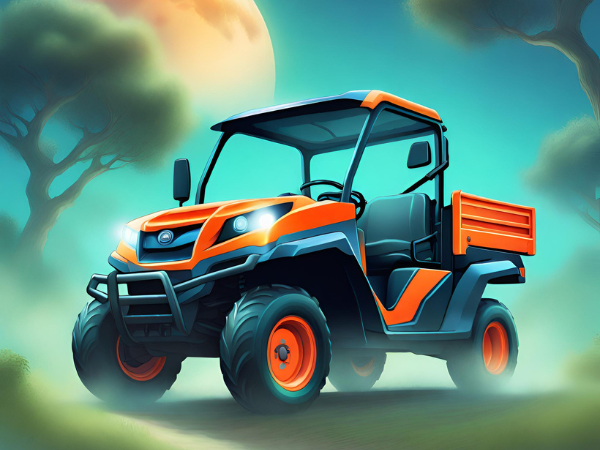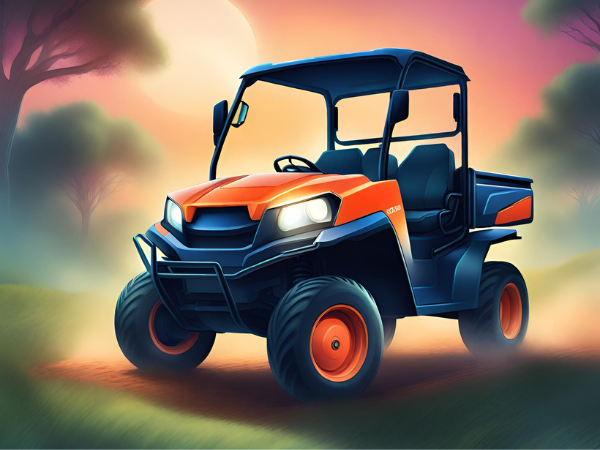The Kubota RTV 400 is a compact utility vehicle known for its EFI gas-powered engine and durability; however, users report issues with transmission and power loss. The Kubota RTV 400, designed for both work and recreation, boasts a rugged chassis, responsive hydrostatic transmission, and a user-friendly design for ease of operation, making it a popular choice for farmers, hunters, and property owners.
Despite its robust build and versatility, some owners encounter occasional problems with hard starting and inconsistent performance, typically related to the vehicle’s CVT (Continuously Variable Transmission) or fuel delivery system. Owners appreciate the RTV 400 for its reliable four-wheel drive, agile handling in tight spaces, and overall efficiency for a variety of tasks, from towing to trail riding, while also noting the importance of regular maintenance to mitigate potential issues.
Key Characteristics
Welcome to the in-depth exploration of the Kubota RTV 400. Understanding the key characteristics of this utility vehicle sets the stage for appreciating its design, power, and functionality. Let’s dig into the essential aspects that make the Kubota RTV 400 a rugged, reliable partner for outdoor ventures and work operations.
Engine And Power
The heart of the Kubota RTV 400 is its robust engine. Power comes from a single-cylinder, gas-powered, four-stroke, and water-cooled EFI engine. It ensures a smooth ride even on tough terrains. The engine’s high-revving power curve makes it a top performer.
Design And Size
Design-wise, the Kubota RTV 400 features a compact but hefty build. It fits neatly into snug spaces yet has a strong presence. Its dimensions are optimal for both storage and maneuverability through narrow trails. With a weight that reinforces stability, the vehicle strikes a perfect balance between heft and agility.
Capability And Versatility
This utility vehicle doesn’t just look tough; it acts the part too. It’s designed to tackle a variety of tasks with ease. The RTV 400’s 4-wheel drive and dynamic braking enhance its capabilities across diverse landscapes. With its dump bed, it moves materials with efficiency. It’s as versatile as they come, ready to support your outdoor or worksite tasks.
Common Problems With Kubota Rtv 400
Owners of the Kubota RTV 400 love its power and dependability. But like all vehicles, it has some common problems. Recognizing these issues helps owners fix them quickly. Let’s explore them one by one.
Transmission Issues
The Kubota RTV 400 can have transmission troubles. These often include:
- Hard shifting
- Strange noises
- Leaking fluids
Regular maintenance keeps the transmission running smoothly.

Brake Problems
Brakes are critical for safety. The RTV 400’s brakes may face issues like:
- Squeaking sounds
- Weak stopping power
- Brake pad wear
Inspect brakes often to ensure they work when needed.
Electrical Troubles
Electrical problems can be tricky and include:
- Faulty lights
- Dead battery
- Bad wiring
Regular checks can prevent unexpected electrical issues.
Suspension Challenges
A smooth ride depends on good suspension. Common suspension issues are:
- Rough ride
- Uneven tire wear
- Noisy struts
Keep an eye on the suspension for a comfortable ride.
Factors To Consider Before Purchasing
Choosing the right utility vehicle is crucial for both work and leisure. Before investing in a Kubota RTV 400, consider several important factors. A smart decision will ensure that the vehicle meets your needs and provides the best value for your money.
Intended Use
Determine the primary use for the RTV. Will it tackle tough terrain on a farm or serve for leisurely rides at a vacation property? Understanding the vehicle’s purpose will guide you toward the right model.
Budget
Your available funds play a critical role in choosing the right RTV 400. Analyze the total costs, including insurance and maintenance. Stick to a budget that aligns with your financial plans.
Service And Support
Consider after-sale service. Easy access to maintenance and support ensures your RTV runs smoothly. Confirm the availability of parts and service centers nearby before purchasing.

Resale Value
Think about the future. Resale value is crucial. Vehicles that maintain their value over time provide a better return on investment. Research the market to understand the Kubota RTV 400’s resale trends.
A summary in the format of a table:
| Factor | Detail |
|---|---|
| Intended Use | Choose based on tasks and terrain |
| Budget | Keep total costs in mind |
| Service and Support | Assess access to service centers |
| Resale Value | Investigate market trends |
Comparisons With Other Similar Vehicles
Choosing the right utility vehicle can be a tough decision. Kubota RTV 400 stands out with its blend of performance and reliability. Let’s see how it measures up against others in its league.
Kubota Rtv 400 Vs. Polaris Ranger 400
The Kubota RTV 400 and Polaris Ranger 400 are both power players. They are utility task vehicles (UTVs) loved for their sturdy build. But each shines in its own way. Below, we compare their strengths:
- Engine: Kubota has a single-cylinder while Polaris boasts a two-cylinder.
- Towing: The Polaris edges out with its towing capacity.
- Hauling: Both can handle big loads, but Polaris offers a little more space.
- Comfort: Kubota provides a more comfortable cabin.
- Pricing: Kubota usually comes at a more accessible price point.
Kubota Rtv 400 Vs. Honda Pioneer 500
The Kubota faces stiff competition from the Honda Pioneer 500. Both are favorites in farms and worksites. Here’s what sets them apart:
| Feature | Kubota RTV 400 | Honda Pioneer 500 |
|---|---|---|
| Engine | EFI Gas | Liquid-cooled single-cylinder |
| Passenger Capacity | 2 | 2 |
| Drive System | 4WD with selectable 2WD | 4WD system |
| Weight | Lighter | Heavier |
Kubota Rtv 400 Vs. Yamaha Wolverine R-spec
When you pit the Kubota against the Yamaha Wolverine R-Spec, it’s all about the thrill. Yamaha is designed for adventure while Kubota favors utility.
- Power: Yamaha leads with a higher horsepower engine.
- Agility: Yamaha offers better off-road capabilities.
- Utility: Kubota has a hydraulic lift bed for easy unloading.
- Durability: Kubota is built to last with heavy-duty construction.
Frequently Asked Questions
What Are The Key Features Of The Kubota Rtv 400?
The Kubota RTV 400 boasts a gas-powered, 404cc engine and selectable 4WD. It’s renowned for its rugged durability, responsive hydrostatic steering, and impressive hauling capabilities. With a top speed of 25 mph and dynamic braking, it’s built for utility.
Common Issues With The Kubota Rtv 400?
Some owners report transmission problems, starting difficulties, and power loss in the Kubota RTV 400. Overheating engines and electrical issues can also occur. Regular maintenance and proper use typically mitigate these problems.
How Does The Rtv 400 Perform Off-road?
The Kubota RTV 400 excels off-road with its strong 4WD, high ground clearance, and sturdy frame. Its independent suspension ensures a smooth ride on rough terrain, making it a reliable choice for rugged landscapes.
What Is The Towing Capacity Of Kubota Rtv 400?
The Kubota RTV 400 has a towing capacity of up to 1,102 pounds. This combined with a payload capacity of 948 pounds makes it a workhorse for small-scale hauling tasks both on farms and job sites.
Conclusion
Exploring the Kubota RTV 400 reveals a blend of robust features and potential issues. This versatile UTV stands out for its reliability and functionality. Yet, like any vehicle, it faces occasional challenges. Whether you’re on a farm or navigating rugged terrain, understanding its pros and cons is key to a satisfying experience.
Always weigh these factors to ensure the RTV 400 meets your specific needs.

